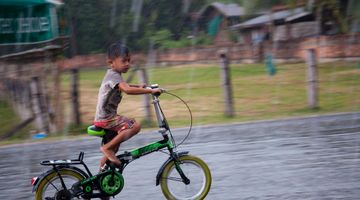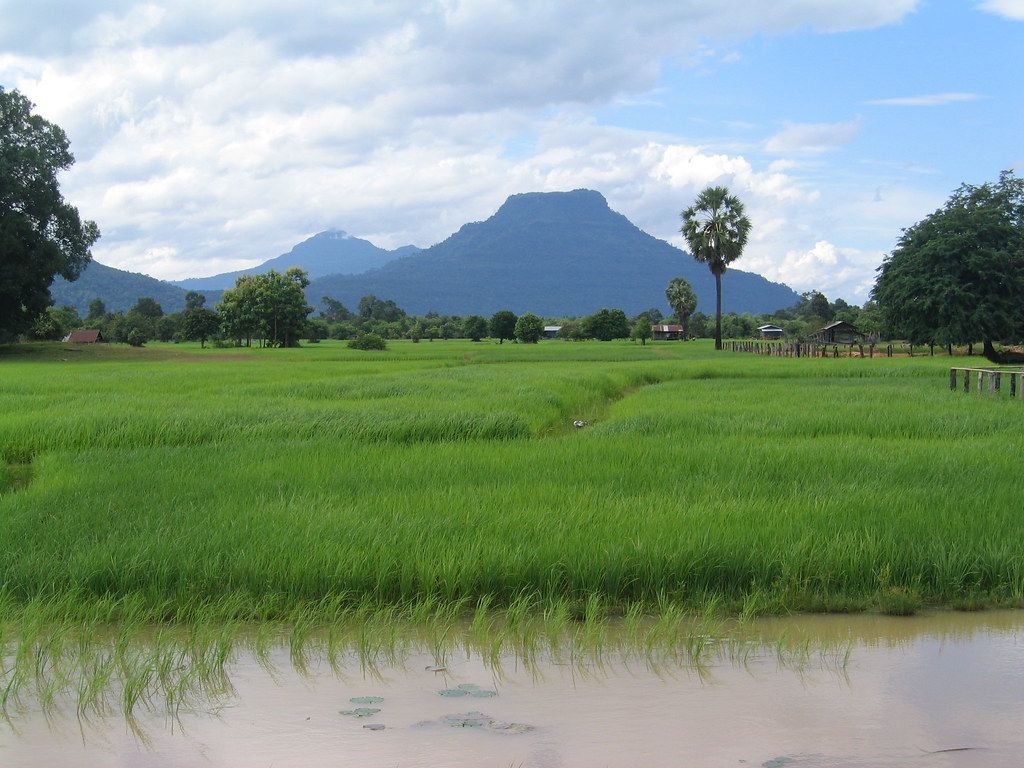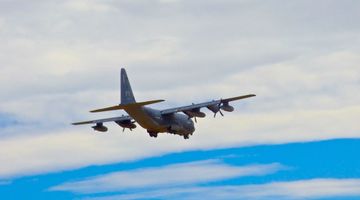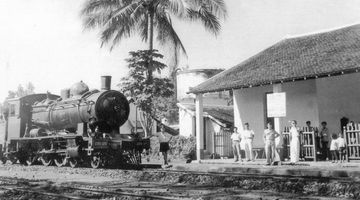Champasak Travel Guide
In a nutshell
Champasak is a sleepy little town in southern Laos; it’s a charming spot, but a bit off the main tourist trail.
Why go to Champasak
The main thing that draws travellers here is the ruins of an old Khmer/Hindu temple, Wat Phu, which is now a UNESCO World Heritage Site. There are also a few other Buddhist temples around the area that are worth stopping in to see.
It's true that there are not a lot of tourist attractions or big sights to see in Champasak, but the charm of this sleepy town certainly makes it worth the visit. Colonial architecture throughout the town serves as a reminder of the region’s history, making this riverside town a lovely place to relax with dinner and a Beerlao after a day of exploring Wat Phu and the other temples.
Champasak is also an excellent region to explore via bicycle or motorbike, and the dirt roads and peaceful villages around the town are lovely ways to soak in some of the flavour of Lao culture. You’ll really only need a day or two here to see what you need; many travellers opt for a simple day trip from Pakse.
When to go to Champasak
In general, the best time of year to travel in Laos is during the months of October-April, especially November-January; these are the coolest times of the year. March and April are the hottest months, and the high, muggy temperatures this time of year make for uncomfortable conditions for most travellers.
Where to stay in Champasak
The town of Champasak is cantered around one main road with a roundabout; this road stretches along the Mekong River, and most of the town’s accommodation is either directly on this road or easily accessible from this main area.
The accommodation options in Champasak consist primarily of basic, clean guesthouses or hotels. This is not a party area, so you won’t be finding bustling hostels packed with drunk backpackers (like you will in many other areas of Southeast Asia).
The nearby island of Don Daeng is another spot where travellers sometimes opt to stay when they are seeking more of a remote experience. There is only one lodge on the island (and it’s on the pricy end of the spectrum, well outside the average backpacker’s budget), but homestays in the village on Don Daeng are also an option for travellers looking to immerse themselves in Laos culture.
Where to eat in Champasak
Because Champasak is a small town, the eating options in the town are relatively limited – you just won't find a large variety of restaurants here, and Champasak is not the place to come if you're looking for as many different options as possible. Having said that, although the food options here are few, most travellers are impressed with the quality and deliciousness of the food available within the town. You can expect friendly service and tasty dishes from the restaurants in town and affordable prices for it all. Lao or Thai dishes will run about LAK25,000-LAK35,000. Some restaurants in town also have Western foods (such as burgers, baguettes, or chips) available for about LAK40,000-LAK50,000.
How to get around Champasak
Getting around the town is easy to do on foot or bicycle (bicycles can be rented from most guest houses); Champsak is small, so you don't have to travel far to get around.
Wat Phu, which is about 10km south of the town, is reachable by bicycle – but a motorbike or a tuk-tuk will be a faster and easier ride.
Renting a motorbike also gives you the chance to explore a bit further around the area, so if you really want to maximize your time in Champasak and see as much as possible, this is the way to go. As always, just stay cautious and alert on the roads. Many travellers actually rent a bike in Pakse and drive down to Champasak on their own, especially because there are more options for motorbike rentals in Pakse.
How to get to and from Champasak
Most travellers to the town of Champasak come here via the nearby town of Pakse, which is also part of Champasak province and a bit of a transport hub in Laos. Songthaews run between the two towns every day (or you can drive yourself on a rented motorbike).
Because the town of Champasak is located on the west side of the Mekong River, you’ll have to cross over at some point to get there; the Lao-Nippon Friendship Bridge near Pakse is a great place to cross if you're coming via motorbike. If you’re coming via bus or songthaew, they will likely drop you off near boat ferries that can take you across to Champasak. In days past, it used to be possible for tourists to take a slow boat ride down the Mekong from Pakse to Champasak; this is no longer a transport option between the towns.
Pakse is the main transport hub in Champasak province/southern Laos, and if you are looking to travel internationally or elsewhere in the country, Pakse is where you’ll travel from—you won't find many direct buses from Champasak heading elsewhere in the region without first having to stop in at Pakse.
With four bus stations in Pakse, it is easy to find a bus to wherever you need to go next, whether that’s elsewhere in Laos or to one of the neighbouring countries – you can bus to Thailand (Bangkok or Ubon Ratchathani) or Cambodia (Siem Reap, Kratie, Phnom Penh, or Strung Teng).
There are daily buses between Pakse and a few cities in Vietnam; these include Danang (LAK220,000), Dong Ha (LAK140,00), Hue (LAK180,000), and Yalai (LAK180,000).
There is also an airport in Pakse which offers regular flights to Vientiane, Savannakhet, Luang Prabang, Siem Reap, Bangkok, and Ho Chi Minh City. While Champasak itself is a small town with limited transport options, with Pakse so close, you can see that it’s easy to get out and around from this area.
Is Champasak a safe place to visit?
Safety concerns in Champasak are limited, and if you take basic precautions in securing any valuable possessions as well as staying safe on the roads (if you rent a motorbike), then you should have nothing to worry about here in terms of safety.





























